
Export
Iranian scorpion’s fauna has two families, Buthidae and Scorpionidae. Of those, at least 7 species (Hemiscorpius lepturus, Odontobuthus doriae, Buthotus salcyi, Buthotus sach, Andrectonus crassicauda, Apisthobuthus petrigus and Mesobuthus eupeus) are implicated in envenoming of humans. Mesobuthus eupeus is widespread in Iran and also in neighbor’s countries. It was demonstrated that 45% of scorpion stings in Iran were due to Mesobuthus eupeus.
The venom of this scorpion contains several compounds, which may cause a number of sting symptoms Bioinformatics-aided Venomics, known as venom informatics, is the complementary part of experimental studies being helpful in identification and classification of the new venom peptides and reduction of the further experimental processes.
Biologically, venoms of scorpions are diverse and have activity due to their predatory and defensive use in nature. In addition, venom of scorpions contains phospholipases A2, serine proteases, metalloproteases, lipolysis activating peptides (LVPs) and hyaluronidases, proteins, and peptides (antimicrobial and toxic peptides performing on ion channels). Several peptide toxins in venomous animals are being considered for pharmacological applications, including treating pain, diabetes, multiple sclerosis, and cardiovascular illnesses.
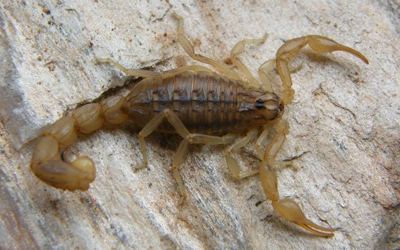
Mesobuthus Eupeus
Biologically, venoms of scorpions are diverse and have activity due to their predatory and defensive use in nature. In addition, venom of scorpions contains phospholipases A2, serine proteases, metalloproteases, lipolysis activating peptides (LVPs) and hyaluronidases, proteins, and peptides (antimicrobial and toxic peptides performing on ion channels). Several peptide toxins in venomous animals are being considered for pharmacological applications, including treating pain, diabetes, multiple sclerosis, and cardiovascular illnesses.
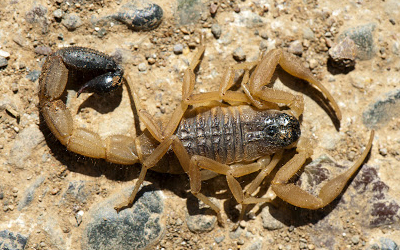
Hottentotta saulcyi
Total length 75–120 mm, males usually smaller than females. Trichobothrium db on the fixed finger of pedipalp situated between trichobothria et and est. Male with slightly longer and narrower metasomal segments, width of pedipalp chela same in both sexes. Pectinal teeth number 28–36 in males, 24–29 in females. Nearly entire body hirsute, pedipalps, dorsal surface of mesosoma, legs, lateral and ventral surfaces of metasomal segments, and vesicle densely hirsute. The hairs on patella of pedipalps are long. Chelicerae black, reticulate. Color yellow to yellowish green or brown, except black anterior part of carapace, telson and fifth metasomal segment. First and second metasomal segments of both sexes longer than wide. Second to fourth metasomal segment width ratio less than 1.2 In Iran: from Koozestan, Lorestan, Chahrmahal & Bakhtiyari, Kohgiluyeh & Boyreahmad, Bushehr, Fars and Ilam provinces.
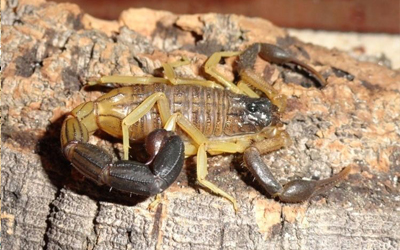
Hottentotta Jayakari
Total length 65–90 mm Trichobothrium db on the fixed finger of pedipalp situated between trichobothria et and est. Chelicerae yellow to brown, reticulate. Sexual dimorphism not readily apparent; width of pedipalp chela and metasomal segments same in both sexes, males have fingers of pedipalps somewhat more twisted then females. Pectinal teeth number 37–42 in males, 32–35 in females. Pedipalps densely hirsute, metasoma sparsely hirsute. Carapace, mesosoma, patella and chela of pedipalps, fourth and fifth metasomal segments and telson yellowish brown to black. Anterior part of carapace with black spot. Mesosomal segments often with a median longitudinal yellowish-brown stripe. Femur of pedipalps, legs, and first and second metasomal segments yellow to yellowish green. Femur of pedipalp with 5 carinae, patella with 8 carinae, chela lacks carinae. Movable fingers of pedipalps with 14–15 rows of granules and 5 or 6 terminal granules. Seventh metasomal segment with 4 well marked ventral carinae. First metasomal segment with 10 carinae; second segment with 8 carinae and lateral median short row of granules; third and fourth segments with 8 carinae; fifth segment with 5 carinae, 3 ventral (1 median, 2 lateral) and 2 dorsal.
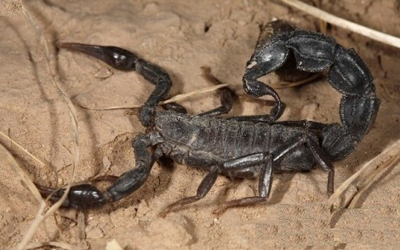
Hottentotta zagrosensis
Male holotype 102 mm long, female allotype 103 mm long. Trichobothrium db on the fixed finger of pedipalp located between trichobothria et and est. Male with slightly longer and narrower metasomal segments, width of pedipalp chela same in both sexes. Pectinal teeth number 34–36 in males, 27–33 in females. Nearly entire body hirsute, pedipalps, dorsal surface of mesosoma, legs, lateral and ventral surfaces of metasomal segments, and vesicle densely hirsute. The hairs on patella of pedipalps are long. Color black except reddish brown chela of pedipalps; sometimes ends of first and second tarsomeres yellow, coxa and trochanter on ventral side of mesosoma marbled, and pectens yellowish brown . Femur of pedipalps with 5 carinae and a row of granules in middle part of internal surface. Ventral surfaces of femur and patella smooth to glossy. Patella with 8 carinae. Chela lacks carinae. Movable fingers of pedipalps with 16 rows of granules and 5 terminal granules. Seventh metasomal segment with 4 well marked ventral carinae. First and second metasomal segments with 10 carinae; third segment with 8 or 10 carinae; fourth segment with 8 carinae; fifth segment with 5 carinae, 3 ventral (1 median, 2 lateral) and 2 dorsal, smooth and sometimes indistinct.
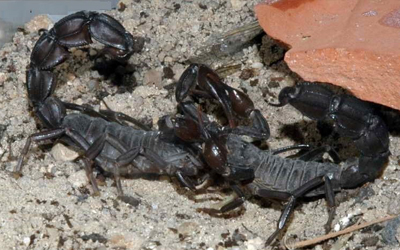
Androctonus Crassicauda
Fattail scorpion or fat-tailed scorpion is the common name given to scorpions of the genus Androctonus, one of the most dangerous groups of scorpions species in the world. They are found throughout the semi-arid and arid regions of the Middle East and Africa. They are a moderate sized scorpion, attaining lengths of 10 cm (just under 4 in). Their common name is derived from their distinctly fat metasoma, or tail, while the Latin name originates from Greek and means "man killer".Their venom contains powerful neurotoxins and is especially potent. Stings from Androctonus species are known to cause several human deaths each year. Several pharmaceutical companies manufacture an antivenom for treatment of Androctonus envenomations.
